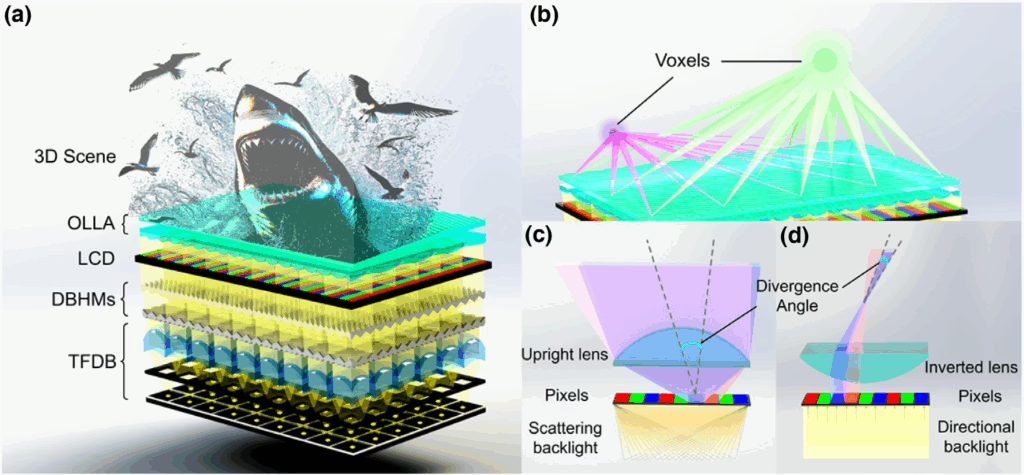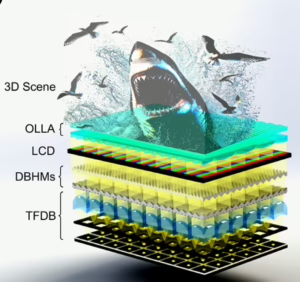Three-dimensional (3D) displays used to be the stuff of science fiction and short-lived fads among consumers. Now, however, they are going through a quiet revolution. A group of researchers from Zhejiang University and the Beijing University of Posts and Telecommunications has come up with a new display architecture that could change the way we see 3D: a miniaturized-voxel light field panel that has an incredibly clear picture, a lot of depth, and a very thin shape
There is a basic trade-off that traditional 3D displays have to deal with. To make depth convincing, they need to make a lot of voxels, which are the 3D version of pixels, without making the device too big or losing image sharpness. Most systems use scattering backlights, which spread light out over a wide area but don’t give you a lot of detail or a wide viewing angle.
The new design gets around this problem by using a clever mix of optics. At its core is a very thin, freeform directional backlight that is designed to send out light beams with great accuracy. This backlight guides light across the display surface in a narrow and even way, which is different from traditional scattering systems. This makes it possible to make much smaller, denser voxels.

The researchers improved performance even more by adding dual homogenization modules, which are tiny prism structures that make brightness even without changing directionality. The system uses orthogonal lenticular lens arrays that direct light to certain places in space to make bright 3D scenes with clear parallax and a wide 121.8° viewing angle.
The prototype display, which has a 32-inch screen and a cabinet depth of only 28 millimeters, is twice as efficient at using information as the previous model. This model is truly portable without losing depth; it has a full cubic meter of 3D display volume (720 mm × 400 mm × 1000 mm). Typical large-scale 3D panels can be more than half a meter thick.
The system made a moving 3D picture of an astronaut floating in space that could be seen from different angles and with motion parallax. Researchers say that the experience comes close to the natural fluidity of how people see depth, and it doesn’t need any special glasses or headgear.
The team’s ability to balance light control with the limits of étendue, which is a rule in optics that governs the conservation of light’s spatial and angular distribution, is what made the breakthrough possible. The system gets both small and precise light steering by making channels for shaping beams smaller and making custom double-surfaced freeform lenses. The outcome: voxel sizes that are six times smaller than those in standard systems, and the image stays sharp even when it’s half a meter deep from the display plane.
The effects go beyond just having fun. The team sees uses in medical imaging, education, and industrial design, all of which need high-fidelity spatial visualization. The miniaturized-voxel panel is a real step toward the ultimate goal of a true holographic display: real-time, high-resolution 3D images rendered in air, in a device as thin as a TV.
Reference
Zhang, Z., Zhang, Z., Fang, X., et al. (2025). Miniaturized-voxel light field panel display based on an ultra-slim and large-area freeform directional backlight. Optica, 12(10), 1632–1639. https://doi.org/10.1364/OPTICA.571647

